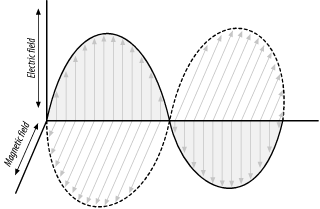Redundant Links
All antennas show a characteristic known as polarity, which refers to the direction that the electrical field moves in as it leaves the antenna. Simultaneously, magnetic waves leave the antenna at a 90-degree angle to the electrical waves. Most common antennas show a linear polarity (i.e., vertical or horizontal). Some antennas, like a wound helical antenna,[14] actually demonstrate circular polarity, in which the waves move outward in a spiral, always perpendicular to each other.
In order for one antenna to receive the signals of another, the polarity must match. Omnidirectionals (and most sectors) have vertical polarity. Dishes and yagis can be mounted vertically, horizontally, or somewhere in between. The Pringles can is just a yagi, and its polarity is determined by the position of the antenna connector. A circularly polarized antenna (like the helical) has its polarity determined by the direction of the outer winding: either clockwise or counterclockwise.
You can use polarity to your advantage to try to eliminate some noise on a long-distance link. First try each end in vertical polarization and measure the perceived noise. Then rotate each end 90 degrees and measure the noise again. Use the position that shows the least amount of noise, and you should have a more stable link. Figure 7-5 shows typical polarization.

Figure 7-5. The polarization of an antenna is determined ...
Get Building Wireless Community Networks, Second Edition now with the O’Reilly learning platform.
O’Reilly members experience books, live events, courses curated by job role, and more from O’Reilly and nearly 200 top publishers.

